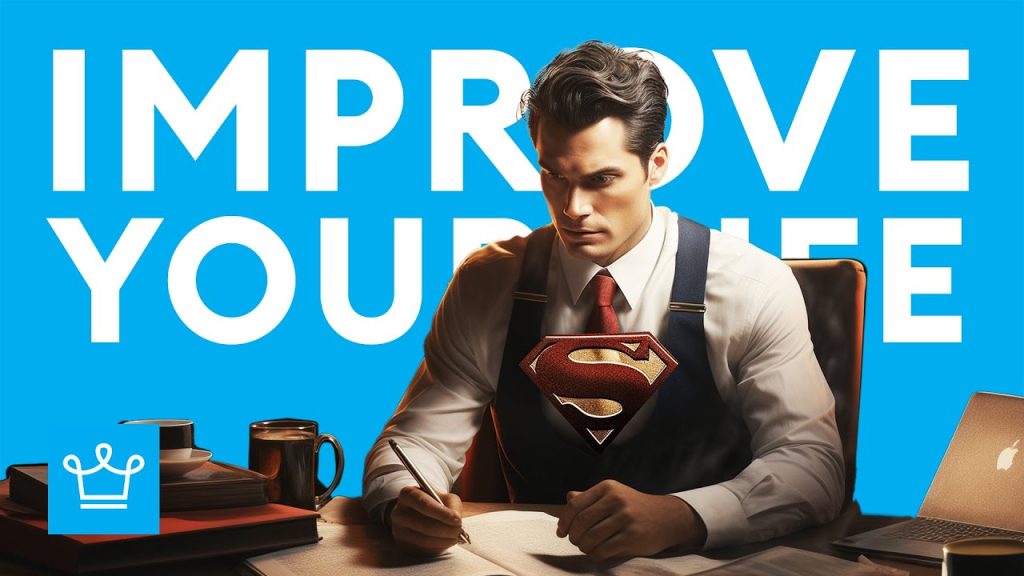There are a million ways to make a million dollars, and in this article, we’re looking at how Tim Ferriss did it and got rich.
Tim Ferriss is someone we routinely follow because not only is he insanely rich, but he’s always doing something interesting or has something smart to say.
Ferriss is a successful author, entrepreneur, investor, public speaker, and human guinea pig, as he likes to refer to himself.
With an estimated net worth of over 100 million USD, he has flipped the script on conventional wealth building.
There’s a lot to learn from him, so here’s how to get rich, according to Tim Ferriss.
Don’t worry if you don’t feel like reading, you can enjoy the video below or watch it on YouTube:
1
Design your life before your wealth
Tim Ferriss is known for coining the phrase “lifestyle design”.
He believes you should not defer your life until you’re too old to actually enjoy it. Instead, you should design your ideal life now and then find a way to afford it.
This is an idea we also subscribe to. However, what does this actually mean?
Before you make any deal or start any business, take a minute and imagine your perfect life.
- Where do you live?
- How does your house look?
- Who do you hang out with?
- What do you do on weekends?
- What do you look like?
- What do you wear?
- What do you eat every day?
- What car do you drive?
- Where do you go on vacation?
These types of questions help you visualize what your ideal life actually looks like. This is your design.
A way to live your own life on your own terms and enjoy it to the fullest. You need to write this down to have a crystal clear idea.
And after that, you go backward:
- How much money, roughly, do you need to afford that?
- What skills do you need to acquire to build that kind of wealth?
- What industry should you go into?
- What kinds of people do you need to meet?
In fact, when you do this, you give your wealth journey a clear purpose.
In Tim Ferriss’ eyes, it’s easier to put in the work and get rich when you know exactly what you’re working for.
2
Become a Master of Outsourcing
Ferriss’ widely popular book “The 4-Hour Work Week” is based on this principle.
It’s more about optimizing your time and efforts than strictly working four hours a week, so let’s get that out of the way first.
Now, Tim Ferriss believes that you, as an entrepreneur, should solely focus on high-impact activities and create systems that allow for more freedom and flexibility.
However, for this to happen, you need to first understand the value of your time. Then, find ways to massively increase it.
This is also something Naval Ravikant suggests, only he goes backward.
He first sets up a ridiculous hourly rate for himself, something like 10,000 USD per hour, then finds a way to justify it.
Regardless, what it means is that you should put all your energy into doing things that have a huge impact.
That could be conceptualizing a new product that can bring another revenue stream into your income.
Or having meetings with people that can open important doors, or investing your time and energy into acquiring a new skill that can massively scale your business.
This is where outsourcing comes in. Let’s say the things that you do amount to 1,000 USD for an hour of your time.
That means that if you can outsource a task for less than that amount, it’s generally a wise financial move to do so.
As an entrepreneur, if your time is best spent on business development, then you should not occupy it with anything else.
Becoming a master of outsourcing is about empowering yourself to live more fully and work more intelligently.
It’s about recognizing that we live in a world rich with talented individuals who can help you in your journey, and leaning on them is a strategic move.
3
Mini-Retirements
Tim Ferriss isn’t just rich but also a rebel against conventional ideas, and one that he’s been really adamant about is the idea of retirement.
He believes that working diligently for several decades with the hope of enjoying leisure time much later in life is a bad plan.
Instead, Ferriss replaces this notion with the concept of mini-retirements, a series of meaningful breaks throughout your life instead of one final, grand retirement.
And there are several key benefits to this approach, and they all tie to your being a better entrepreneur.
Firstly, it allows you to rest, recharge, and gain new perspectives, making you more effective and possibly even more creative when you return to work.
It also challenges the notion that your identity is tied to your career. Have you met people whose whole personality is their work?
That’s all they talk about, and that’s all they do, and eventually, most of them burn out and realize too late that the endless grind doesn’t necessarily get you anywhere faster.
Mini-retirements challenge the status quo and ask fundamental questions about what life and work are actually for.
However, if you don’t get to enjoy the fruits of your labor throughout your life, you may find it pointless in the end.
It’s recently required a mindset shift, and Tim Ferriss loves it when he finds new ways to look at old ideas, in order to get a deeper understanding of how life should be lived.
So what are these mini-retirements?
Think of them like breaks or sabbaticals that allow you to enjoy life, recharge, and think creatively about making money.
They can last anywhere between 1-3 months, or even 6 months to a year.
They are not periods of spontaneous travel and leisure but rather periods of time where you take things super slowly and give yourself time to really think things through.
Imagine starting every year with the same energy you had the first time you started all this.
4
Fear-setting of goal-setting
Fear is one of the most powerful emotions you can feel, and Tim Ferriss suggests you should use this to your advantage on your journey to get rich.
In essence, fear-setting is about liberating yourself from the paralyzing effects of fear and reframing the way you approach life’s decisions.
Tim Ferriss introduces “Fear-Setting” as a powerful exercise that, in many ways, is the counterbalance to goal-setting.
While goal-setting encourages you to outline the positive outcomes you want to achieve, fear-setting encourages you to confront, deconstruct, and examine the fears that are preventing you from taking action.
Fear-setting is a structured approach to addressing the ‘worst-case scenarios’ associated with making a significant decision or change in one’s life.
This process involves three fundamental steps:
- Defining: Clearly articulate the fears that are holding you back. What are you afraid of? Get it all down on paper, without judgment.
- Preventing: For each fear, list the steps you could take to decrease the likelihood of it happening. This could include plans, actions, rules, or strategies.
- Repairing: For each fear, consider how you would recover if it did happen. What could you do to set things right again?
Fear-setting is powerful because it brings clarity to ambiguous fears and creates a practical roadmap.
It allows you to dissect your fears, understand them more clearly, and develop actionable plans.
The exercise often reveals that many of our fears are either unlikely, not as bad as we imagine, or things we can actually handle.
It helps to remove the paralysis that fear often induces and aids in rational, clear, forward-thinking planning.
5
Invest in learning
Tim Ferriss is a fervent advocate for continuous learning as a means to personal and professional growth and riches.
He believes that investing time and resources in acquiring new skills or knowledge yields significant dividends throughout life.
For Ferriss, this isn’t confined to formal education; it involves reading extensively, taking courses, engaging with mentors, and seeking new experiences that challenge and expand one’s perspective.
Such an investment is not about immediate monetary returns; rather, it’s about building a richer, more informed, and more adaptable life.
This mindset encourages people to view learning as a lifelong journey, emphasizing that the skills and knowledge you accumulate are assets that can open doors, solve problems, and enhance your understanding of the world.
In essence, for Ferriss, learning is the best investment you can make in yourself.
This is something we wholeheartedly agree with, which is why we built our e-learning platform and invested so much in the Alux App.
Go check it out if you haven’t already, we’ve prepared a free 7-day trial to show you just how powerful continuous learning can be!
6
Build a personal brand
This is something he and Richard Branson, whom we covered in the previous article, have in common.
They both understand how powerful a personal brand can be and how to leverage it.
You see, a strong personal brand becomes a self-perpetuating cycle: As you share value, your reputation grows; as your reputation grows, more opportunities arise, which, in turn, provides more value to share.
For Ferriss, building a personal brand is less about self-promotion and more about becoming a trusted, reliable resource in your field, thereby attracting opportunities instead of having to constantly chase them.
A personal brand doesn’t mean being famous though. It means that when you put your name on something, people expect quality.
And this is extremely powerful!
7
Think big, but take super small steps
Tim Ferriss believes that you should have bold and almost audacious goals.
He believes that thinking big is the starting point for significant achievement.
However, one thing he always mentions is that big goals are often overwhelming and intimidating. And it’s very common for you to get paralyzed by the sheer scope of your goal.
It’s also very common to have low morale and burnout when you are working towards something that feels so far out of reach.
And trust us, low morale and burnout will cripple any momentum you may have. It’s really hard to push through, constantly. We, as humans, are not designed for things like this.
This is why Ferriss believes that with every big goal, there should also be a series of smart tasks that can be done daily, or in the worst case, weekly.
Now, smart tasks is actually an acronym. It stands for specific, measurable, achievable, relevant, and time-bound.
This approach helps turn a seemingly insurmountable project into a series of small, achievable milestones.
Ferriss suggests constantly focusing on these smaller tasks and making regular progress, day by day.
This allows individuals to build momentum. Moreover, it instills a sense of accomplishment and motivation that fuels further action.
8
Network differently
When it comes to getting rich, Tim Ferriss has an ace up his sleeve: He’s renowned for his unique approach to networking.
Instead of the traditional route of accumulating a vast number of shallow connections, he advocates for fostering deeper, more meaningful relationships with a select group of individuals.
For Ferriss, networking is less about quantity and more about quality; he seeks connections that offer mutual value and fosters genuine friendships.
One of his strategies involves bypassing the ‘obvious’ big names in favor of what he calls the “rising stars” in various industries.
Ferriss believes that it is often more beneficial to connect with individuals who are on their way up, as they are usually more responsive and more open to forming mutually beneficial relationships.
He also emphasizes the importance of offering value upfront when establishing a new connection.
In fact, instead of asking for favors when you first meet someone, start the relationship by helping the other person in some way.
This could be through providing them with information they would find useful. Or maybe making an introduction to someone they would like to meet. Or it could be just helping them solve a problem they are currently facing.
9
Master the art of saying “no”
Tim Ferriss has long emphasized the importance of mastering the art of saying ‘no.’
The world is filled with endless opportunities, invitations, and requests. That’s why the ability to turn down what doesn’t align with one’s goals and priorities is crucial.
Ferriss argues that saying ‘yes’ to everything is a fast track to stress and burnout, and it ultimately dilutes your ability to focus on what is genuinely important.
For Ferriss, saying ‘no’ is an exercise in setting boundaries and protecting one’s time, energy, attention, and riches.
He often quotes the famous saying, “When you say ‘yes’ to others, make sure you are not saying ‘no’ to yourself.”
Even more so, he understands that by refusing what doesn’t serve us, we create space for what does.
Moreover, Ferriss believes that saying ‘no’ should not be viewed as a negative act. Instead, it is a positive and proactive choice that enables us to commit to our own goals and priorities.
It’s not about being dismissive or selfish; it’s about being intentional.
To master this art, Ferriss suggests developing polite but firm scripts for declining offers and requests. He advises practicing this so it becomes a comfortable and natural response.
He also underscores that saying ‘no’ graciously is a skill that can and should be cultivated.
10
Enjoy the journey
The journey towards achieving one’s goals is just as important, if not more so, than the actual outcome.
Ferriss consistently advocates for a lifestyle design that places value on the present moment.
This perspective challenges the common assumption that hard work and sacrifice today will inevitably lead to happiness and satisfaction tomorrow.
“Enjoy the Journey“ is a mantra that encourages us to find contentment and satisfaction in the process, rather than constantly deferring happiness until we reach a certain milestone.
In fact, Ferriss believes in setting ambitious goals. But he also emphasizes the significance of appreciating the steps along the way.
Enjoy the learning, the challenges, the growth, and even the setbacks.
For Ferriss, enjoying the journey means making a conscious effort to live a full and meaningful life every day! Not just waiting for ‘someday.’
It’s a reminder that life is happening right now! And that every moment is an opportunity to choose happiness and contentment.
And for those of you still reading this, we have a great bonus:
Money is multiplied by the number of W’s you control.
- What you do.
- When you do it.
- Where you do it.
- With whom you do it.
For Tim Ferriss, the true value of getting rich is in the fact it allows you to take control of your time and money.
It’s not about accumulating wealth in your bank account; it’s a tool for crafting a life on one’s own terms. And there you have it.
These are 10 lessons we gathered from Tim Ferriss on how to get rich. See you next time!






